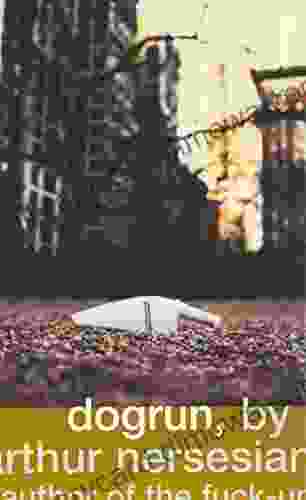Structure-Function Relations of Warm Desert Plants: Adaptations for Thriving in Arid Environments

Warm deserts are among the most extreme environments on Earth, characterized by scorching temperatures, limited water availability, and nutrient-poor soils. Despite these harsh conditions, a remarkable array of plants have evolved to call these deserts home. Warm desert plants have developed a suite of specialized adaptations that enable them to survive and even thrive in this challenging environment.
4 out of 5
| Language | : | English |
| File size | : | 4435 KB |
| Text-to-Speech | : | Enabled |
| Screen Reader | : | Supported |
| Print length | : | 216 pages |
In this article, we will delve into the fascinating world of warm desert plants and explore the intricate relationships between their structure and function. We will examine how these plants have adapted their morphology, physiology, and biochemistry to cope with the unique challenges of desert life.
Morphological Adaptations
Warm desert plants exhibit a range of morphological adaptations that reduce water loss and increase their surface area for water absorption. These adaptations include:
- Small, thick leaves: Small leaves minimize the surface area exposed to the sun, reducing water loss through transpiration. Thick leaves provide additional water storage capacity and protection from intense radiation.
- Waxy cuticles: A waxy cuticle on the leaf surface prevents water evaporation and reduces the risk of desiccation.
- Sunken stomata: Stomata are pores on the leaf surface that allow for gas exchange. Sunken stomata reduce the exposure of stomata to the dry desert air, minimizing water loss.
- Extensive root systems: Warm desert plants have extensive root systems that spread widely in search of water. These roots can reach deep into the soil, accessing water resources that are unavailable to other plants.
- Stem succulence: Some desert plants, such as cacti and succulents, have succulent stems that store water. These stems can swell during periods of rain and gradually release water during dry spells.
Physiological Adaptations
Warm desert plants have also evolved physiological adaptations that enable them to conserve water and tolerate drought conditions. These adaptations include:
- CAM and C4 photosynthesis: CAM (Crassulacean Acid Metabolism) and C4 photosynthesis are specialized photosynthetic pathways that reduce water loss. CAM plants open their stomata at night to take in carbon dioxide, which is stored as an organic acid. During the day, the stomata are closed, and the stored carbon dioxide is released and used for photosynthesis.
- Low transpiration rates: Warm desert plants have low transpiration rates to minimize water loss. This is achieved through leaf adaptations, such as small leaves, waxy cuticles, and sunken stomata.
- Drought tolerance: Desert plants have developed mechanisms to tolerate drought conditions. These mechanisms include the ability to accumulate compatible solutes, which help to maintain cell turgor and prevent dehydration.
Biochemical Adaptations
Warm desert plants have evolved biochemical adaptations that protect them from the damaging effects of high temperatures and radiation. These adaptations include:
- Heat-resistant enzymes: Desert plants produce heat-resistant enzymes that can withstand the high temperatures of the desert environment.
- Antioxidants: Antioxidants help to protect plant cells from damage caused by free radicals, which are produced under conditions of stress.
- UV-protective pigments: Some desert plants produce UV-protective pigments, such as flavonoids and anthocyanins, that absorb harmful ultraviolet radiation.
Ecological Implications
The adaptations of warm desert plants have profound implications for the desert ecosystem. These plants provide food and shelter for a variety of animals and insects. They also play a crucial role in maintaining soil stability and preventing erosion. Additionally, desert plants can help to improve air quality by absorbing carbon dioxide and releasing oxygen.
Understanding the structure-function relationships of warm desert plants is essential for developing conservation strategies and managing desert ecosystems. By studying these remarkable organisms, we can gain valuable insights into the mechanisms of plant adaptation and resilience. This knowledge can be applied to other arid environments, such as semi-arid grasslands and Mediterranean shrublands, to help protect and preserve these unique ecosystems.
Warm desert plants are a testament to the power of evolution and the remarkable ability of life to adapt to even the most challenging environments. Through their specialized morphological, physiological, and biochemical adaptations, these plants have carved out a niche for themselves in the harsh and unforgiving desert landscape. Understanding the structure-function relationships of warm desert plants is not only fascinating but also has important implications for the conservation and management of desert ecosystems.
4 out of 5
| Language | : | English |
| File size | : | 4435 KB |
| Text-to-Speech | : | Enabled |
| Screen Reader | : | Supported |
| Print length | : | 216 pages |
Do you want to contribute by writing guest posts on this blog?
Please contact us and send us a resume of previous articles that you have written.
 Book
Book Novel
Novel Page
Page Chapter
Chapter Text
Text Story
Story Genre
Genre Reader
Reader Library
Library Paperback
Paperback E-book
E-book Magazine
Magazine Newspaper
Newspaper Paragraph
Paragraph Sentence
Sentence Bookmark
Bookmark Shelf
Shelf Glossary
Glossary Bibliography
Bibliography Foreword
Foreword Preface
Preface Synopsis
Synopsis Annotation
Annotation Footnote
Footnote Manuscript
Manuscript Scroll
Scroll Codex
Codex Tome
Tome Bestseller
Bestseller Classics
Classics Library card
Library card Narrative
Narrative Biography
Biography Autobiography
Autobiography Memoir
Memoir Reference
Reference Encyclopedia
Encyclopedia Rich Johnson
Rich Johnson John E Findling
John E Findling Anthony L Peratt
Anthony L Peratt Annie Salisbury
Annie Salisbury F H C Marriott
F H C Marriott Jayne Faith
Jayne Faith Ann Fraistat
Ann Fraistat Poppy Rose
Poppy Rose D Justhy
D Justhy Anne Berest
Anne Berest Anna Katmore
Anna Katmore Helen Godfrey Pyke
Helen Godfrey Pyke Ted Leeson
Ted Leeson Robert Elmer
Robert Elmer Heather Pich
Heather Pich Victoria Taylor Roberts
Victoria Taylor Roberts Aoitripjp
Aoitripjp Sam Rudder
Sam Rudder Jonathan Eyers
Jonathan Eyers Anthony Hartnett
Anthony Hartnett
Light bulbAdvertise smarter! Our strategic ad space ensures maximum exposure. Reserve your spot today!

 Art MitchellUnveiling the Forgotten Secrets of Indian Spirituality: The Enchanting Tale...
Art MitchellUnveiling the Forgotten Secrets of Indian Spirituality: The Enchanting Tale...
 Braden Ward50 Best Arena Exercises and Patterns: The Ultimate Guide to Perfecting Your...
Braden Ward50 Best Arena Exercises and Patterns: The Ultimate Guide to Perfecting Your... Henry GreenFollow ·3.6k
Henry GreenFollow ·3.6k Charlie ScottFollow ·4.3k
Charlie ScottFollow ·4.3k Dean CoxFollow ·12.3k
Dean CoxFollow ·12.3k Russell MitchellFollow ·11.9k
Russell MitchellFollow ·11.9k Roger TurnerFollow ·2.3k
Roger TurnerFollow ·2.3k Craig CarterFollow ·6.1k
Craig CarterFollow ·6.1k Harrison BlairFollow ·11.6k
Harrison BlairFollow ·11.6k Desmond FosterFollow ·3.8k
Desmond FosterFollow ·3.8k

 Anton Chekhov
Anton ChekhovMother Goose The Old Nursery Rhymes Illustrated By Arthur...
A Journey Through the Enchanted Gardens of...

 Alexander Blair
Alexander BlairUnleash the Power of Imagination: Exploring the...
A Literary...

 Harry Hayes
Harry Hayes50 Quick and Easy Ways to Become Brilliant at Project...
Project stakeholder...

 Gus Hayes
Gus HayesSimple Practical Tips To Understand The Basics Of...
: The Looming Threat of...

 Connor Mitchell
Connor MitchellUnleash Your Literary Superpowers: Immerse Yourself in...
Welcome to a Captivating Universe of...
4 out of 5
| Language | : | English |
| File size | : | 4435 KB |
| Text-to-Speech | : | Enabled |
| Screen Reader | : | Supported |
| Print length | : | 216 pages |










